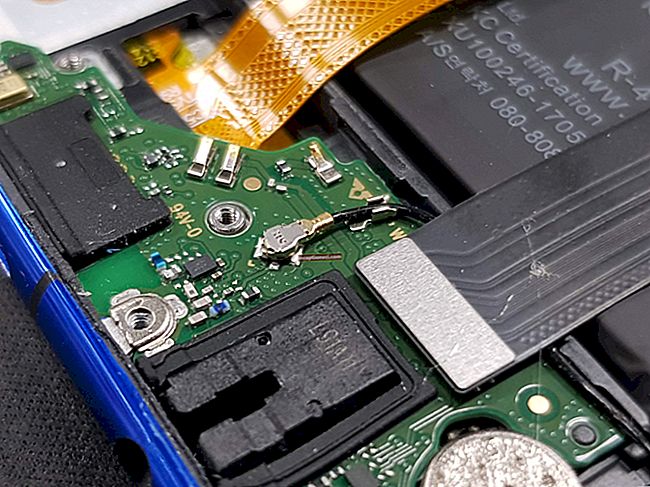Local networks(Local Area Network - LAN) were the simplest computer networks. Their distinctive features, as a variety of computer networks, consisted in a limited number of nodes (on the order of units), a small distance between interconnected computers (the territory of one building, floor, office), the presence of autonomous communication lines between network nodes (usually wired - cable). The original topology of local networks was the simplest and consisted of connecting network nodes (computers) to a common wired line called a bus. The list of typical LAN features that have survived to this day includes the limited number of network subscribers, the limited territory within which the subscribers are distributed, and the presence of a telecommunication line between subscribers (nodes). In modern LANs, the original features have changed in three aspects:
1) changes in the topology of communication lines (in comparison with the topology of the "bus" type);
2) changes in the type of network nodes (along with computers, network nodes can be devices with various types of digital content: video, graphics, telephony, etc.);
3) the introduction of interconnection between the LAN (including all its nodes) and the backbone network, which is used to interconnect networks for various purposes (in particular, other LANs).

The last of the listed aspects is associated with the acquisition by modern LANs of qualitatively new properties compared to their original purpose, namely, due to the relationship with the backbone network, the LAN acquired the ability to perform the functions of an access networkto the backbone. The functions of the interface between the LAN and the backbone network are performed by one of the LAN nodes, which includes a network controller (Network-Interface Controller-NIC).
WirelessLAN (Wireless LAN - WLAN) differ from wired ones in that the interconnection between network nodes is carried out using radio signals. The nodes include transmitting and receiving devices. The environment in which the nodes are located is the propagation environment for radio signals. As a result, the need for wired lines is eliminated. The WLAN Access Point (AP) acts as a wired LAN hub.
Wireless connection to the backbone network can be used not only in relation to individual subscribers, but also in relation to group subscribers, which are wired LAN.
The necessity and expediency of using wireless LANs along with wired LANs is due to the advantages that are achieved by the lack of wired connections. These benefits manifest themselves in the following circumstances:
1) the need to create a LAN between nodes separated by natural and artificial obstacles (for example, water obstacles, walls of houses, floors);
2) the need to ensure the mobility of nodes united in a local network;
3) the need to gain access to the backbone network with access to the Internet network in public places of short-term stay (hotels, train stations, reading rooms of libraries, etc.).
The demand for wireless local communication (from a consumer point of view) determines the place of WLAN in modern wireless telecommunications. The most important consumer property of WLAN, along with the convenience of their deployment to ensure the mutual communication of subscribers, is to provide subscribers with access to backbone networks. The latter, in particular, explains the use of the English-language term "hot spot"(hotspot) for public WLAN deployments with Internet access.

Historical aspects of formation WLAN
Consumer demand for WLAN applications has been predicted in all industrialized countries with widespread use of personal computers (PCs) since the early 1970s.
The objective need to ensure the compatibility of WLAN equipment from different manufacturers led to the need to develop appropriate standards, which were simultaneously produced by the standardization bodies of the three regions:
1) in the USA - by the Institute of Electrical and Electronics Engineers (IEEE);
2) in Europe - by the European Telecommunications Standards Institute (ETSI);
3) in Japan - by the Association of Radio Industries and Business (ARIB).
The most famous are the standards developed under the auspices of the IEEE and ETSI.
In the IEEE, WLAN standards were created by the 802.11 Work Group WG of the 802 LAN / MAN Standards Committee. Within the IEEE 802 committee, the WG 802.11 working group develops WLAN standards, and the related standards are known as IEEE 802.11 standards. The original (basic) IEEE 802.11 standard was adopted in 1987. In the future, he was constantly undergoing improvements, which correspond to versions with different letter designations - from ato x.
The WLAN standards developed by ETSI are known as HIPERLAN (High Performance Radio LAN). The development of these standards was carried out almost simultaneously with the IEEE 802.11 standard (with a year ahead). Initially, it was supposed to develop 4 versions of these standards, but in reality it was limited to two versions: HIPERLAN 1 and HIPERLAN2. According to the plan, it was assumed that WLAN of the HIPERLAN standards, with the use of the frequency resource equivalent to the IEEE 802.11 standard, should have higher data transfer rates. Support for the development of standards was carried out by well-known hardware manufacturers, in particular, Ericsson.
However, the process of practical implementation of WLAN (taking into account the current state of the market) has led to the need for both developers and standardization bodies to choose only one of the directions for the development of wireless network technologies. This direction turned out to be the networks of the IEEE 802.11 family of standards.
WLAN equipment manufacturers' associations actively participated in the development of the standards. The IEEE 802.11 standard complies with the formation of the WECA (Wireless Ethernet Compatibility Alliance), known for its popular Wi-Fi Alliance brand. The role of this Association was manifested in the development of a certification system for IEEE 802.11 products, due to which they are known as Wi-Fi products. Similar associations of manufacturers of HIPERLAN products: the HIPERLAN Alliance and the HIPERLAN2 Global Forum are currently less active. However, it is likely that it would be impractical to completely negate some of the inherent advantages of HIPERLAN and the possibility of their future use is not ruled out.
Factors Determining Architecture WLAN
One of the most significant distinguishing features of local digital networks in comparison with global ones is the presence of autonomous telecommunication lines between their nodes. The difference between the architecture of wireless and wired LAN is due to the properties of the propagation medium of the signals used:
- conductive guiding medium in wired LAN;
- natural environment in wireless LAN (Wireless LAN -WLAN).
A related use of both environments is that they are Multiple Access (MA) environments.. Signals from different subscribers in the conditions of their independent operation can be transmitted simultaneously, which leads to a superposition of signals in the environment. This superposition results in the difference between the total signal and each of the transmitted ones and significantly complicates the possibility of their correct reception. Collision can occur in a shared environment, regardless of its physical properties.signals. Elimination of collisions presupposes the consistent use of the environment, a mandatory component of which is the monitoring of its employment. Occupancy-based media access is referred to as Carrier Sense Multiple Access.(Carrier Sense Multiple Access - CSMA). LANs of different flavors (wired and wireless) use several derivatives of this access method.

Access of nodes to the environment of both flavors is carried out using network adapters(Network Interface Card - NIC, Wireless NIC - WNIC), which perform the functions of the lower two layers of the basic reference model for interoperability of open systems ISO / OSI, namely:
- physical layer (Physical Layer - PHY);
- sublayer of control access to the medium (Media Access Control - MAC) of the data link layer (DLL).
Network adapters (wired and wireless) provide monitoring of the environment, coordinated access of various nodes to it, generation, transmission and reception of signals.
In a wired environment, which is a two-wire long line, such as a cable, the transmission of signals between nodes is accompanied by relatively weak attenuation during their propagation. A collision of signals from two (or more) nodes leads to a significant change in the characteristics of the total signal (first of all, the energy level), in comparison with single signals. Accordingly, each node using the NIC can detect the fact of a collision of signals during their transmission and take action to ensure the order of access to the environment of different nodes. Ordered Multiple Access for Collision Reduction in Wired Environments has come to be known as Carrier Sense Multiple Access with Collision Detection(CSMA / Collision Detection - CSMA / CD). Collision detection is an inherent property of wired environments.
In a wireless environment, which is the natural and artificial filling of the space surrounding the nodes, signals propagate, attenuating significantly with distance from the source. The total signal of several sources does not have energy features corresponding to the fact of collision. The latter can be detected by checking for errors in the received and processed WNIC digital signal after the completion of its transmission. Accordingly, the reaction to the fact of a collision can be carried out with a delay, and prevention of collisions becomes an essential necessity. An associated wireless multiple access method was developed in preparation for the IEEE 802.11 standard. It is named Carrier Sense Multiple Access and Collision Avoidance.(CSMA / Collision Avoidance - CSMA / CA).
Local digital networks of large organizations are, as a rule, a combination of wired and wireless segments. Accordingly, the LAN architecture should provide for a distribution system that performs the following functions:
- ensuring interconnection between different LAN segments (including wired and wireless segments);
- ensuring access of all LAN segments to the backbone Internet environment.
Access to the backbone network is provided through Web servers (service servers) with appropriate interface properties. The network and transport layer (Network Layer, Transport Layer) issues of open systems interoperability go beyond the IEEE 802.11 standard, which is limited to the MAC and PHY issues of the WLAN implementation. Accordingly, the consideration of the WLAN architecture is limited in the standard to the issues of building wireless segments and LAN distribution systems.
Elements of architecture WLAN
The list of core elements includes basic service kits, portals, and a distribution system. The structure and content of the functions performed by the listed elements is as follows.
1. Basic service sets(Basic Service Set - BSS) are wireless LAN components that allow their nodes to communicate with each other and with other LAN nodes by transmitting signals using electromagnetic waves. The structural components of the BSS are stations(Station - STA) and access points(Access Point - AP).
BSS stationsare a collection of network nodes and wireless network adapters. Under the knotnetwork means any device that is the source of packet messages (computer, digital telephone, etc.). WNIC provides reception and transmission of radio signals (PHY-layer), as well as performing the functions of a MAC-layer controller.In general, the term “station” in relation to a collection of a node and a WNIC corresponds to the analogous concept stipulated in the Radio Regulations - it is a collection of receivers and transmitters, including additional devices necessary to perform the functions of a radiocommunication service.
Access point(AP) is an entity that has STA properties and provides two functions: coordinating the access of BSSs to the common wireless environment and access of BSSs to the distribution system.
The need to coordinate the work of BSS stations is due to their use of a common frequency-territorial resource. The area within which communication between BSSs is provided is referred to as the basic service area.(Basic Service Area - BSA). The weight of BSSs shares one common frequency band for radio signal exchange, and collisions between radio signals of different stations result in harmful mutual interference, which precludes the possibility of simultaneous communication of several stations. Communication between BSS stations is carried out in half-duplex mode with relaying signals (by analogy with radio relay communication) of different STA access points. The set of functions performed by the STA and the AP to ensure the transfer of messages within the BSS is called the station service(Station Service - SS).
Access points are the infrastructure elements of the BSS; they are used in all rooms (basic service areas) that are designed for continuous WLAN operation (in particular, hot spots). As infrastructure elements, APs provide an interface between the BSS and the LAN distribution system. In case the BSS is autonomous, the access point can provide direct access to the backbone network (Internet). For this purpose, industrial designs of AP are equipped with a router.

2. Distribution systemThe Distribution System (DS) is a network element that allows messaging between different BSSs and also between the BSS and wired LANs in the network. The environment that ensures the transfer of messages between network segments (wired and wireless) is called the distribution system environment.(Distribution System Medium - DSM). The set of functions performed by DS is referred to as the distribution system service.(Distribution System Service - DSS). Station Services (SS) and DSS together provide the ability to transfer messages between STAs in different LAN segments. An essential feature of message transmission via DS is that the transmission protocols are MAC-layer protocols, so that stations of different BSSs and wire segments interact with each other without going beyond this layer.
The distribution system environment for digital networks that are located inside buildings is generally wired. The distribution environment for LANs that span segments that are dispersed in open areas of an institution (such as a campus or office) can be wireless. The IEEE 802.11 standard does not impose restrictions on how DSM is implemented, nor on the list of functions of the ISO / OSI protocol stack that an environment can perform. In particular, these functions can go beyond the 2nd (link) layer and cover the 3rd (network) layer. The latter corresponds to the interconnection of LAN with wide area networks (WAN), in particular, the Internet (in this case, a router can be used). The creation of an interface between DS and WAN corresponds to one of the most common uses of Wi-Fi - WLAN - the creation of hotspots. In the framework of the IEEE 802.11 protocol, the relationship between WLAN and WAN is not regulated.
3. Portalsare network elements through which wired network segments are connected to the distribution system (DS), functioning according to the requirements of wired LAN standards (for example, 802.3 - Ethernet). Through portals, messages are transmitted between wireless and wired network segments according to MAC-level protocols. Connecting nodes of wired segments to DS using portals is called their integration (integration)to the network.Due to the transfer of messages according to the protocols of the same layer (MAC-layer), the nodes of all network segments, wired and wireless, are logically equal.
The collection of all BSS networks and integrated wired segments (local area networks) is called the extended service set(Extended Service Set - ESS). The area occupied by the ESS elements is called the extended service area.(Extended Service Area - ESA). The maximum number of ESS nodes is not regulated by the IEEE 802.11 standard. The ESS infrastructure: its distribution system, access points, portals, WAN interface - is created by the ESS operator (provider). The network provides, firstly, the interconnection between all nodes included in the wired and wireless segments, and, secondly, communication with the nodes of the global network (if such communication is provided).
The unambiguity of identification of network nodes during the transmission of messages between them is ensured by the adopted system of code designation of network elements. There are 3 types of element identifiers:
- ESS identifier(Service Set Identifier - SSID), which is an ESS name of 32 alphanumeric characters;
- BSS identifier(Basic Service Set Identifier - BSSID), which matches the MAC address of the access point of the corresponding BSS;
- STA identifier, which matches the MAC address of the station in question.
The MAC addresses are assigned to the AP and STA in accordance with generally accepted rules: the first three bytes of the address are used to designate the manufacturer of the NIC, and the remaining three are used to designate the NIC number. Network identifiers (SSIDs) are defined by their operators and are usually a textual "network name". All ESS stations must have the right to use its telecommunication resources. SSIDs are used for the initial (initial) verification of the subscribers' eligibility to work in the ESS.

Interaction of architectural elements
An essential functional feature of ESS is the dynamism of changing its subscriber composition: network subscribers can connect to it at any time, interrupt communication with the network (leave it), mix between different BSS networks. The dynamic functioning of the ESS is ensured by the interaction between the elements (components) of its architecture.

The set of functions performed by the elements has received the name of the corresponding services(services). The standard defines 9 types of services:
- subscriber authentication;
- subscriber associations;
- deauthentication of subscribers;
- disassociation of subscribers;
- reassociation of subscribers;
- wired LAN integration;
- message delivery;
- confidentiality of messages;
- distribution of messages.
Services are classified according to two main criteria:
1) based on the role of services in ensuring the functioning of the network (according to this feature, services are distinguished that ensure the formation of a network, and services that ensure the transfer of messages between subscribers);
2) by the type of network elements that perform the corresponding service function. On this basis, services are subdivided into station(Station Service - SS) and distribution system services(Distribution System Service - DSS).
The formation of a network, subject to the presence of all its infrastructural elements (distribution system, access points, portals), consists in connecting / disconnecting its mobile subscribers. Connecting the latter involves checking their authenticity(Authentication) and association(Association) subscribers to the network. When mobile subscribers leave the network, they are disassociated(Disassociation) and deauthentication(Deautentication). The movement of mobile subscribers from one BSS to another without leaving the ESS is provided by the reassociation service(Reassociation). Authentication / de-authentication are station services and association / disassociation are distribution system services. The logical connection to the DS of the wired LAN is done by the integration service included in the DSS.
The transfer of messages between subscribers within the network is carried out by delivery services(MSDU delivery), privacy(Privacy) and distribution(Distribution) messages. The first two are station-based, the last one is a DSS service. Information exchange between network elements in the process of its formation and operation involves the transmission of messages of two types: service messages that provide management (Management) and control (Control) access to the wireless medium, and data transmission messages (Data). Messages are transmitted in the form of frames (Frame), the list of varieties of which is regulated by the standard.
In the process of connecting / disconnecting and functioning in the network, mobile stations can be in one of the following three states:
- state1 - initial state when STA is not authenticated and not associated;
- state 2 - an intermediate state (during connection / disconnection) when the STA is authenticated but not associated;
- state 3 - operational functional state when STA is authenticated and associated.
The state number determines the list of frame subtypes that can be used in this state; the narrowest list corresponds to state 1, the full list corresponds to state 3. Depending on the state number, starting from which it is allowed to use frames of various types and subtypes, there are 3 classes of frames:
- class 1, which includes frames used starting from state 1;
- class 2, which includes frames used from state 2; - class 3, which includes frames used only in state 3.
Let's note the qualitative differences between frames:
1) Class 1 frames provide the execution of procedures related to STA connection to the network, STA access to the wireless environment (Wireless Medium, WM) and data transfer, but the possibility of using DS is excluded for all procedures;
2) Class 2 frames ensure the execution of management procedures associated with STA association, disassociation and reassociation; reassociation of STA is possible only if it was previously associated;
3) class 3 frames provide data transmission using DS (this is their essential difference from class 1 data frames).
The transition of the STA to the state with a higher number is achieved by the successful execution of the key procedures of the current state (authentication - in state 1, associations - in state 2). The return transition to the state with a lower number is achieved by notification of the exit from the current state (disassociation - in state 3; deauthentication - in state 2). The deauthentication frame sent by the STA in state 3 assumes the deassociation is performed and causes the STA to go to state 1.









